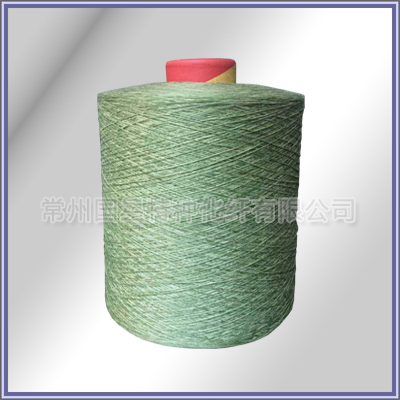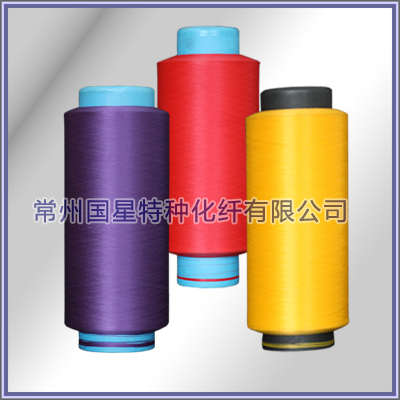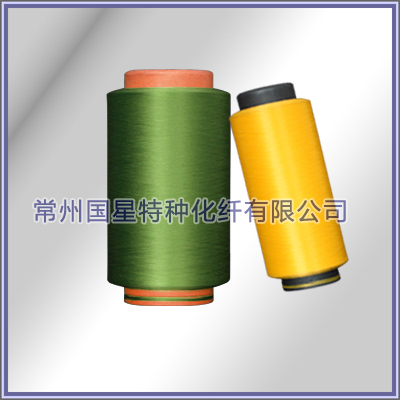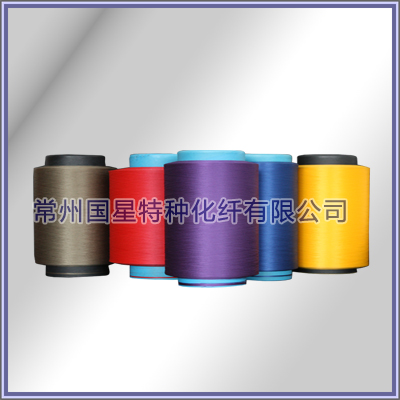In 2018, it coincided with the 40th anniversary of China's reform and opening up. In the past 40 years, China's textile industry has achieved remarkable results. While becoming a key force supporting the healthy and smooth operation of the world textile industry system, China's textile industry is also facing raw material supply and trade. New changes in rules and consumer markets, investment environment, etc.
In this year, the focus of production capacity and consumer market shift to emerging countries, and the global industrial division of labor is being reshaped.
This year, industry companies began to shift from providing products to providing experiences, from manufacturing to service manufacturing, from providing equipment to providing total solutions.
This year, China��s textile industry broke through
Overall review
Focusing on the transformation of "socialism with Chinese characteristics into a new era, the main contradiction of our society has been transformed into a contradiction between the people's growing needs for a better life and the development of inadequate and uneven development", in 2018, the entire textile raw material industry is also undergoing An industry reform. Throughout the year, China's textile raw materials industry's overall operating conditions are generally stable, especially the chemical fiber industry can reflect the priority of the priority, quality of the market environment. While the automation and intelligentization of technical equipment in the whole industry is continuously improving, the development speed of product diversity is also accelerating, and the raw material bottlenecks in the fields of downstream spinning and weaving are continuously solved, thus laying a solid foundation for the development of the downstream garment industry. basis.
Chemical fiber industry performance throughout the year
The chemical fiber industry continues to deepen the supply-side structural reforms, mainly in the following three aspects:
1. The release of new capacity is accompanied by the elimination of backward production capacity. In 2018, the chemical fiber industry such as viscose fiber, polyester fiber, acrylic fiber and polypropylene fiber all experienced the elimination of old capacity. Taking the viscose fiber industry as an example, according to the requirements of the ��Standard Conditions for Viscose Fiber Industry (2017 Edition)��, although the overall production capacity of the viscose filament industry is still 180,000 tons/year, after a series of optimization of production capacity, it is formed. Sichuan Yibin, Jilin Province, Jilin City, Henan Xinxiang and Jiangsu Nanjing four major viscose filament industry base.
Viscose staple fiber, although nearly 70,000 tons of new capacity was gradually released in 2018, but nearly 300,000 tons of backward capacity was eliminated. This kind of capacity elimination is not only because the backward production capacity does not meet the standard conditions. The deeper reason is that in addition to the large-scale advantages of the new production capacity, the automation of its equipment and technology also effectively improves the production efficiency. From a cost perspective, companies need to take the initiative to take the old equipment out of the historical arena. Through this capacity change, the production line of viscose staple fiber with a single line of less than 30,000 tons is basically extinct. The chemical fiber industries such as polyester, acrylic, and polypropylene also show that this market elimination mechanism takes precedence over the policy elimination mechanism.
2. The production base is gradually gathering and developing, and large-scale large-scale groups in various sub-sectors have begun to increase. Some enterprises within the industry have begun to actively deploy overseas production bases. Taking the viscose staple fiber industry as an example, this year has gradually formed a gathering place in Xinjiang, Hebei, Jiangxi, Jiangsu, Shandong, Zhejiang and other provinces. Among them, there are already 3 enterprises with a scale of more than 700,000 tons. Xinjiang's viscose staple fiber production capacity has reached nearly 1 million tons, accounting for 22% of the entire viscose staple fiber industry. The production capacity of Zhongtai Chemical has already reached 930,000 tons, that is, Zhongtai Chemical occupies about 93% of Xinjiang viscose staple fiber production capacity.
In the polyester industry, large-scale polyester production groups are represented by large groups such as Hengli, Hengyi, Tongkun, Rongsheng and Shenghong. At the same time, the Tongkun Group represents the introduction of automated production equipment, such as The automation equipment such as the mechanical arm and the automatic baler saves a lot of labor costs and achieves the purpose of improving production efficiency. After the automation level reaches 80% or more, the balance of product quality has been greatly improved compared with the peers. In the active expansion of overseas projects, Hengyi Industrial (Brunei) Co., Ltd., a subsidiary of Hengyi Group, further invested in petrochemical projects in Brunei, and Hengli Group is expected to reach a petroleum refining project with the Abu Dhabi government. Both Hengyi Group and Hengli Group are private enterprises. The expansion of their overseas business shows that large groups within the domestic polyester industry are actively expanding into upstream refining projects to ensure the entire industrial chain from crude oil to polyester. Its industrial safety layout.
3. The environmental protection policy is strict, the enterprises are investing more and more in environmental protection, and the cost of the chemical fiber industry is increasing. In the second quarter of 2018, the ��National Environmental Review�� action, although not too much impact on the chemical fiber industry itself, has a greater impact on the upstream and downstream of the entire chemical fiber industry, thus affecting the entire chemical fiber industry. For example, the auxiliary chemical raw materials for viscose staple fiber, such as caustic soda, sulfuric acid and other chemical products, have been shut down. The related chemical plants in Shandong and Jiangsu provinces have closed down more than 40%, seriously affecting Shandong and Jiangsu. The supply of auxiliary chemical raw materials in Zhejiang and other provinces has caused the cost of viscose staple fiber plants in these three provinces to rise sharply. At the same time, the conversion of coal to gas has also led to a rapid increase in the cost of viscose staple fiber plants in the forefront of Sichuan Province. In the downstream water-jet weaving, printing and dyeing industries, printing and dyeing factories and water-jet weaving factories in Guangdong, Zhejiang, Jiangsu and other places have also closed down more rectification.
Due to the influence of environmental protection policies on the upstream and downstream, the operating rate of each link is insufficient. Finally, the price of chemical fiber and the state of shipment in 2018 have been in a state of warmth: the price increase of raw materials has caused the price of chemical fiber to rise, while the downstream production limit. This has caused the chemical fiber shipment channel to be blocked. In this state, although the price of chemical fiber had a large increase in the third quarter, it was hindered by the downstream shipping channels. After entering the fourth quarter, the prices of the entire chemical fiber industry and the cotton industry all fell. .
Annual performance of the cotton spinning industry
Affected by the gradual escalation of Sino-US trade frictions that began in March of the first quarter, the confidence of the cotton spinning industry is not too strong. The reason is that after the new situation of the international trade pattern, the industry mistakenly believes that the Sino-US trade friction will be more severe than the 2008 financial crisis, so that there are more concerns when taking orders. Under this mentality, the cotton textile industry has performed as follows:
1. Orders prioritize exchange rate, finance, and cargo security. In 2018, the RMB exchange rate showed a trend of ��depreciation after appreciation��, which was the opposite of the path of RMB exchange rate ��from depreciation to appreciation�� in 2017. Since the appreciation of the RMB exchange rate will cause certain losses to export enterprises during the settlement of foreign exchange, foreign trade companies that have suffered losses in this area in 2017 do not dare to pick up too many foreign orders in the RMB exchange rate appreciation phase in the first half of 2018. After entering the period of June 2018, in the process of the RMB exchange rate entering the depreciation channel, most of the textile foreign trade personnel were subject to the previous exchange losses, and they still did not dare to take orders. This state continued until the third quarter. When the renminbi had a clear depreciation signal, foreign trade companies began to dare to take orders. However, with the further escalation of Sino-US trade and trade frictions and some geopolitical influences around the world, foreign trade companies have shown some cautiousness in receiving foreign orders. However, according to the data released by the customs, the export data of textiles still shows a certain growth, but the export target has begun to gradually shift from Europe or the Americas to Southeast Asia and Africa.
2. The structure of cotton textile products is frequently adjusted. In the case of chemical fiber prices are relatively high, and price fluctuations are frequent, the downstream textile mills have taken two measures. One is to purchase raw materials for regular yarns from the order point of view, and the other is to use some relatively low-priced textile materials. New products development. For example, at the beginning of the year, the price of cotton and polyester was relatively cheap, and cotton had the expectation of a reduction in production. Polyester had expectations of rising crude oil prices. Therefore, many textile companies have adjusted the product structure to use cotton or polyester staple fiber as the raw material for spinning. This has led to a significant increase in raw material prices in the cotton and polyester industries in the second and third quarters. However, after entering the fourth quarter, as the prices of these two raw materials rose too fast in the third quarter, the downstream mills began to use viscose staple fiber or other cheaper raw materials for spinning, which made cotton and polyester prices down in the fourth quarter. .
In the field of core-spun yarns, acrylic core-spun yarns have gradually replaced viscose staple fiber core-spun yarns and become the mainstream varieties in the market. At the same time, due to the environmental protection of core-spun yarn dyeing, some yarn mills have begun to develop color-modified polyester staple fibers. Spinning polyester polyester core yarn. It is under these changes that textiles on the market in 2018 showed a much larger number of categories than in 2017.
3. The product popularity cycle began to shorten, and the e-commerce channel opened faster. The variety of yarns facilitates the development of textile end products such as clothing and home textiles. The fashion cycle of a certain style will be actively reduced due to the production volume of the goods, thus showing that the cycle of the end product begins to shrink. At the same time, on the large-scale network platforms such as Taobao, Tmall, Jingdong and Suning, the proportion of textiles and clothing has gradually increased. After the emergence of the new platform, it will generally involve textile and apparel products. For example, after the emergence of more and more, there are more textile individual industrial and commercial households. Therefore, the establishment of textile e-commerce channels has been much faster than in previous years. In 2018, Tmall's ��Double Eleven�� turnover totaled 213.5 billion yuan, an increase of 26.93% compared with 2017's 168.2 billion yuan, while textiles such as sweaters, socks and trousers also received a large proportion.
Review of various indicators
Here, we should select the varieties with a wide range of market applications and a certain production capacity, such as synthetic fiber, viscose staple fiber and cotton textile materials, in an attempt to interpret the operating status of the textile raw materials market in 2018.
Yield
Note: The 2018 production data is based on estimates from January to November.
It can be seen from Table 1 that the output of major textile raw materials in 2018 shows an increase or decrease. Among them, spandex, nylon, viscose staple fiber showed a pattern of increased yield. The incremental champion is spandex, which is 12.73% higher than the 2017 production. The increase in production of spandex is mainly due to the increase in production of cotton-coated ammonia and human cotton-coated ammonia in recent years. This improvement is due to the downstream to add more spandex yarn to different fabrics in order to weave a more fit and comfortable fabric. The estimated output of spandex this year is 620,000 tons, which is likely to be higher than the production of acrylic fiber known as ��artificial wool��.
The growth of nylon and viscose staples is mainly due to the fact that the core yarns, which are based on both, were sought after in 2017. At present, the main raw material of core-spun yarn is still nylon and viscose staple fiber. After 2018 development, the core-spun yarn has been transformed from pure ��28S imitation rabbit hair�� to ��faux rabbit cashmere�� and ��seven rainbow core yarn��. "Faux velvet" and other types of core yarn. Due to the appearance of such wool-like and faux-spun core-spun yarns, the comfort and good feel and appearance of the wool directly lead to a reduction in the production of conventional acrylic tops. In addition, although the acrylic core-spun yarn has a place in the yarn market in 2018, because the price of acrylic fiber is too high, the downstream spinning customers and sweater customers are not too sought after for acrylic fiber, and acrylic raw material propylene is added. The current production of nitrile is also limited, which eventually led to a significant shrinkage in the production and consumption of acrylic fibers in 2018. Acrylic fiber production in 2018 is estimated at 550,000 tons, a decrease of 23.61% compared to 2017.
In cotton, although the planting area has increased compared with 2017, there are more extreme weather in 2018, especially after the seedling period, the weather in some cotton growing areas is relatively bad. According to the forecast of relevant institutions, in a certain sense, cotton production in 2018 is slightly less than that in 2017, about 2%. On polyester, production is mainly affected by the gradual increase in crude oil prices from the beginning of June to October. The gradual increase began, mainly due to the rapid increase in PTA prices, which caused the production of polyester plants in some areas to be limited or stopped. Therefore, the polyester production in 2018 is estimated to decrease compared with 2017.
Less 1.65%.
price
Note: The 2018 production data is based on estimates from January to November.
As can be seen from Table 2, the prices of major textile raw materials in 2018 showed an upward trend. The main reasons are:
1. After the environmental protection is strict, the production unit transfers some of the cost to the product price. Taking the price of viscose staple fiber as an example, the average price in 2018 is around 14,606 yuan / ton, which is 7.49% lower than that in 2017. However, from the specific price operation in 2018, it has experienced two highs in May and September 2018. This price surge was mainly due to the environmental problems in May and September, and the prosperity of the paper industry continued to be high in 2018, resulting in an increase in the prices of raw and auxiliary materials for viscose staple fibers. However, from the perspective of gross profit, the entire industry or enterprises do not have much profit, and even some small-scale factories have experienced losses.
2. The output is reduced, causing the price to rise. Although acrylic fiber may be used less in the downstream, the reduction in the yield of acrylic staple fiber has caused a shortage of acrylic fiber in the market, which has led to a strong increase in the price of the acrylic fiber industry. Table 2 shows the acrylic fiber series. The price increase of products in 2018 is basically above 20%.
After 3.6 months, the price of crude oil rose, resulting in a price increase of 8% to 14% for polyester and nylon series products. The price of polyester staple fiber and polyester filament in 2018 is 13.99% and 8.39%, respectively, compared with 2017. The reason for the large increase in the price of polyester staple fiber is that on the one hand, the price base is relatively low, on the other hand, the demand for polyester staple fiber in the spinning mill has increased significantly. The reason for the increase in demand is that polyester staple fiber is used in other applications in addition to the core-spun yarn. For example, the yarn of the T/R blended series is popular in 2018, and the output is much higher than in previous years. At the same time, the market for polyester-spun chenille yarns was opened in the second half of the year, and it has been well applied in the fields of carpets and interior decoration. Therefore, the price of the polyester series has risen, the cost-driven type only occupies a small part, and more is that the downstream demand side is opened, which has driven the price increase of polyester-related products.
4. The increase in production and the uncertainty of the external environment have led to price declines in some varieties. Taking viscose staple fiber and spandex as an example, the expansion of production capacity is relatively rapid, resulting in an increase in production supply. To some extent, it has broken the balance between supply and demand, resulting in a general decline in prices. While cotton is mainly constrained by uncertainties in the external environment and the country's taxation on imported goods, prices have fallen sharply in the fourth quarter of 2018, offsetting the second and third quarters. The magnitude of the increase.
profit
Note: The data are all from the medium fiber network.
As can be seen from Figure 1 to Figure 3, in 2018, the polyester series and the nylon series basically maintained the state of profit for the whole year. Viscose staple fiber and acrylic fiber have experienced a loss period of 1~2 times in the whole year. Among them, the loss period of acrylic fiber series lasted for nearly half a year. Overall, textile

 +86-519-86266888
+86-519-86266888 gxhx888@126.com
gxhx888@126.com



